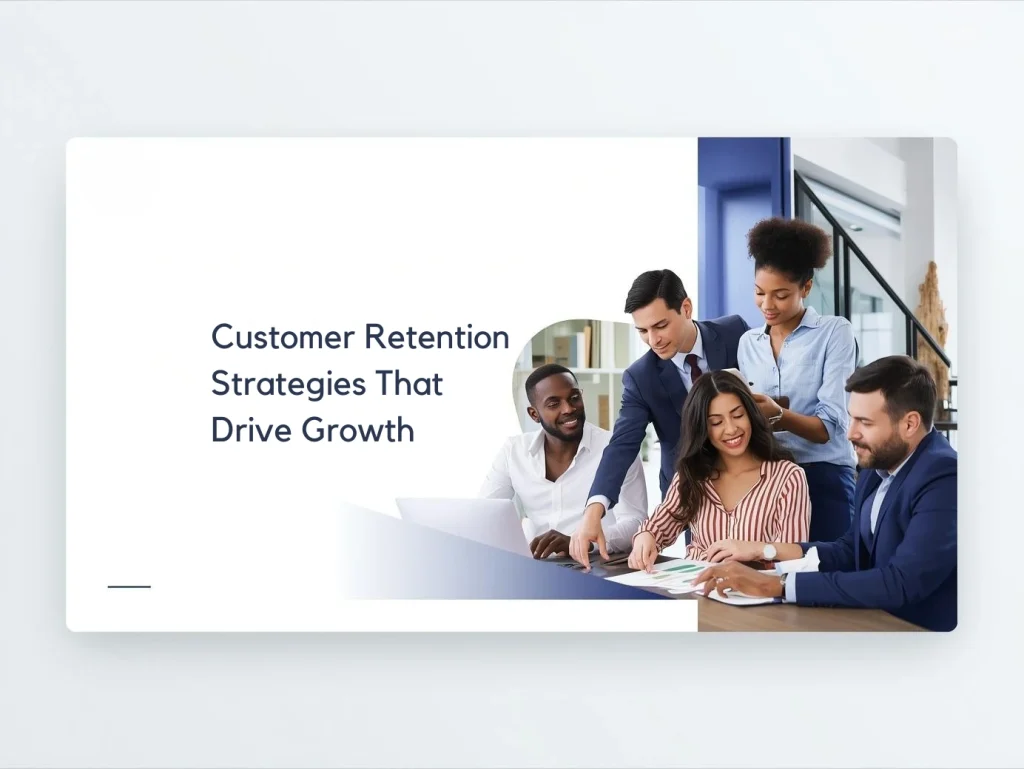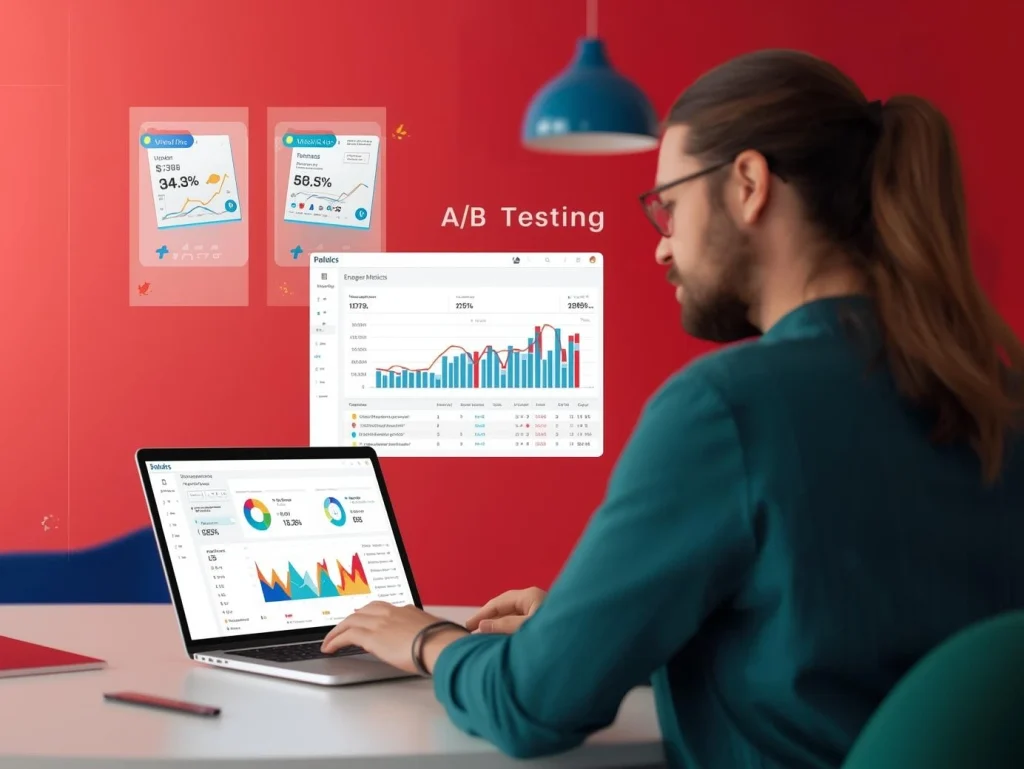Conversion optimization (CRO) is no longer just a buzzword—it’s a strategic approach that directly impacts customer retention and revenue growth. For local businesses, understanding how to optimize conversion funnels, landing pages, and user experiences can mean the difference between one-time visitors and loyal, repeat customers.
In this article, we’ll explore how conversion optimization boosts retention, revenue, and long-term growth, highlight key strategies, recommend tools, and provide actionable insights. For an in-depth guide on CRO techniques, see our pillar post: The Complete Guide to Conversion Optimization for Local Businesses in 2025.
Importance of Customer Retention
In today’s competitive world, attracting new customers is expensive — but keeping existing ones is where real business growth happens. Customer retention is not just about repeat purchases; it’s about building lasting trust and brand loyalty. Here’s why it matters more than ever:
-
Lower Marketing Costs
-
It’s 5–7 times more expensive to acquire a new customer than to retain an existing one.
-
Loyal customers require fewer marketing efforts because they already know and trust your brand.
-
-
Increased Lifetime Value (LTV)
-
Retained customers spend more over time.
-
They’re also more likely to explore new products or premium services.
-
-
Word-of-Mouth Referrals
-
Happy customers become brand advocates.
-
Their recommendations are more powerful and trustworthy than paid ads.
-
-
Valuable Feedback for Growth
-
Returning customers provide honest feedback.
-
This helps businesses refine their products, services, and customer experience.
-
-
Stronger Brand Stability
-
Consistent revenue from loyal customers ensures financial stability.
-
Retention builds a solid foundation during market fluctuations or downturns.
-
In short, focusing on customer retention is a long-term strategy that pays off in higher profits, stronger relationships, and reduced marketing stress. Businesses that prioritize loyalty programs, personalized experiences, and after-sales engagement will continue to thrive in 2025 and beyond.
Boost Conversions Through Smart Customer Retention Tactics
Retention strategies don’t just keep customers around — they directly improve your conversion rates. Below are key ways that investing in retention leads to sustained growth and better conversions:
-
Repeat Buyers Convert More Easily
Existing customers already know your brand, trust your product, and have experienced your value. When you engage them with new offers or upsells, they’re far more likely to convert than a cold prospect. Because they’ve already passed the trust barrier, their path to conversion is shorter.

-
Loyal Customers Respond to Personalization
With retention strategies, you gather data — preferences, purchase history, interaction patterns. Use that data to personalize marketing campaigns (email, in-app messaging, SMS). Personalization increases relevance and conversion by showing your customers what they truly want, not generic offers. -
Improved Customer Lifetime Value (CLV) Encourages More Conversions
When customers stay longer, you can convert them multiple times over a longer period. Instead of one single sale, you get multiple opportunities to convert. Retention turns revenue from a one-time event into a recurring cycle. -
Word-of-Mouth & Social Proof Fuel New Conversions
Satisfied, retained customers naturally promote your brand through reviews, referrals, and testimonials. That social proof influences new users to convert. According to Forbes, boosting retention by just 5% can increase profits between 25% and 95%. Forbes -
Lower Friction & Better Experience
Retention strategies often include better customer support, smoother onboarding, and proactive engagement. When your existing customers have fewer hurdles and enjoy seamless experiences, every new offer or upsell you present has less friction — which means higher conversion rates.
In short, retention isn’t just about keeping customers — it’s about continually converting them into higher-value buyers and advocates. By implementing retention strategies like personalized engagement, loyalty programs, better support, and feedback loops, you not only reduce churn but also amplify conversion rates and brand growth over time.
To explore more about optimizing conversions with retention tactics, check out “Conversion Optimization Tools 2025”.
Top Strategies to Improve Customer Retention in 2025
Retention is not just about keeping customers — it’s about turning them into loyal advocates and long-term revenue sources. Here are five effective retention strategies you can start using right now:
-
Personalized Onboarding & Education
The first few interactions shape customer perceptions. Build an onboarding experience that feels personalized — walkthroughs, help guides, video tutorials — so users see value immediately. Tailored onboarding reduces confusion and early churn rates. -
Regular Customer Feedback & Listening Loops
Ask for feedback at meaningful moments: after purchase, after support interactions, or periodically through surveys. Use this feedback to drive product improvements and show customers you’re actively listening. This builds trust and reduces reasons for them to leave.

-
Loyalty & Rewards Programs
Reward repeat behavior. Offer points, discounts, or VIP benefits to long-term customers. A reward program reinforces why staying with your brand makes sense. Many top companies cite loyalty programs as core retention tools. -
Proactive Support & Relationship Building
Don’t wait for complaints — reach out. Use data to flag customers who are at risk (low usage, repeated issues) and intervene early with personal check-ins or tailored offers. According to Forbes, proactive retention efforts can markedly reduce churn. Forbes+2Forbes+2 -
Cross-sell, Upsell & Value Expansion
Use your existing base to grow. Introduce related add-ons, upgrades, or complementary services in a way that genuinely adds value. The longer a customer stays and engages, the more opportunities you have to convert them further.
Retention isn’t a one-off tactic — it’s an ongoing commitment. By combining personalized onboarding, feedback loops, rewards, proactive support, and upselling strategies, you strengthen your customer relationships and multiply conversions over time.
For more tools and ideas on optimizing conversions and retention, check out our post: Conversion Optimization Tools 2025.
Why Conversion Optimization Matters for Customer Retention
CRO is about maximizing the value of every visitor to your website, landing page, or marketing funnel. By analyzing user behavior, businesses can identify friction points, streamline navigation, and provide an optimal experience.

Key benefits for retention:
-
Personalized user experiences increase engagement.
-
Faster, smoother checkout processes reduce drop-offs.
-
Targeted follow-ups and remarketing campaigns encourage repeat business.
Key CRO Strategies to Boost Retention
-
A/B Testing: Continuously test landing pages, email campaigns, and call-to-action buttons to find the highest-converting variations.
-
User Journey Mapping: Understand the steps your customers take and optimize for minimal friction.
-
Personalization: Use behavioral data to tailor offers, content, and recommendations.
-
Customer Feedback Integration: Incorporate survey data to identify pain points and opportunities.
-
Trust Signals: Use testimonials, reviews, and case studies to increase credibility.
Tools to Support Conversion Optimization
To achieve optimal results with conversion optimization (CRO), businesses must leverage the right tools that enable data-driven decisions, improve user experience, and drive higher conversions. In 2025, technology plays a pivotal role in helping businesses optimize their processes efficiently and at scale. Below are some of the most effective tools for CRO:
-
Google Optimize
Google Optimize is a powerful and user-friendly A/B testing tool that allows businesses to test variations of their website or landing pages to identify the highest-performing elements. It integrates seamlessly with Google Analytics, providing detailed insights into user behavior and conversion rates.

-
Hotjar
Hotjar is a popular tool for understanding how users interact with your website. It provides heatmaps, session recordings, and surveys that help you visualize where visitors click, scroll, and drop off. With Hotjar, you can make data-driven adjustments to improve user experience and increase conversions. -
HubSpot
HubSpot’s CRM platform offers a suite of tools designed to improve lead nurturing and customer engagement. With features like email marketing automation, landing page optimization, and lead scoring, HubSpot helps businesses streamline their conversion funnels and enhance customer relationships. -
Crazy Egg
Crazy Egg offers advanced heatmapping, A/B testing, and scroll tracking tools, enabling businesses to visualize how users interact with their site and adjust for better results. This helps identify specific areas where users are disengaging or getting lost in the conversion process.
By using these tools, businesses can optimize their sales funnel, track key metrics, and continuously improve customer engagement, driving better conversions and revenue growth.
Metrics and KPIs to Measure CRO Success
To assess the effectiveness of CRO strategies, track these metrics:
-
Customer Retention Rate (CRR): Percentage of returning customers over time.
-
Customer Lifetime Value (CLV): Revenue generated per customer during their lifecycle.
-
Conversion Rate: Percentage of visitors completing desired actions.
-
Revenue per Visitor: Average revenue generated per website visitor.
-
Engagement Metrics: Click-through rates, session duration, and page interactions.
Best Practices for Continuous Improvement
-
Conduct regular CRO audits to identify friction points.
-
Use real-time analytics to adapt campaigns quickly.
-
Test different incentive strategies for customer retention, like loyalty programs or discounts.
-
Align CRO with overall business goals and integrate with reputation management and survey insights.
Case Studies & Real-World Examples
Example 1 – Local Retailer:
A small retail shop optimized its product pages and checkout funnel using A/B testing. Retention increased by 20%, and repeat purchase revenue rose by 15% within six months.
Example 2 – SaaS Startup:
A SaaS company integrated survey feedback and testimonial data into CRO campaigns. Optimizing landing pages with social proof increased conversions by 30% and improved customer satisfaction scores.
Frequently Asked Questions (FAQs)
Q1: How does CRO improve customer retention?
A: By reducing friction, personalizing experiences, and improving engagement, CRO encourages repeat purchases.
Q2: Which CRO tools are best for SMBs?
A: SuperLocalFans, Google Optimize, Hotjar, HubSpot CRM.
Q3: Can CRO impact reputation?
A: Yes, better user experiences and optimized funnels enhance brand credibility and customer satisfaction.
Conclusion
Conversion optimization is a strategic growth driver. By analyzing user behavior, testing solutions, and integrating customer feedback, SMBs can boost retention, increase revenue, and enhance brand reputation. Implementing data-driven CRO strategies ensures that every visitor has the best possible experience, encouraging loyalty and repeat business.
Explore our pillar guide for more in-depth CRO strategies: The Complete Guide to Conversion Optimization for Local Businesses in 2025.
